Your cart is currently empty!
Tag: Measures

Proactive Measures: How Data Center Preventative Maintenance Can Save You Time and Money
Data centers are the heart of any organization’s IT infrastructure, storing and processing data critical to its operations. As such, ensuring the smooth functioning of a data center is essential to the success of any business. One way to ensure the reliability and efficiency of a data center is through proactive preventative maintenance.Preventative maintenance involves regularly monitoring, inspecting, and servicing equipment to prevent potential failures and downtime. By taking proactive measures to maintain data center equipment, businesses can save both time and money in the long run.
One of the key benefits of preventative maintenance is the avoidance of unexpected downtime. Downtime can be costly for businesses, leading to lost revenue, decreased productivity, and damage to their reputation. By implementing a preventative maintenance program, businesses can identify and address potential issues before they escalate into major problems, minimizing the risk of unexpected downtime.
Preventative maintenance also helps to extend the lifespan of data center equipment. Regular servicing and upkeep can help to identify and address wear and tear on equipment, ensuring that it continues to operate efficiently for longer. This can help businesses save money by reducing the need for costly repairs or replacements.
In addition to saving time and money, proactive preventative maintenance can also improve the overall performance of a data center. Regular servicing can help to optimize equipment performance, improve energy efficiency, and enhance cooling capabilities. This can lead to better overall performance, reliability, and uptime for the data center.
To implement an effective preventative maintenance program, businesses should establish a schedule for regular inspections, servicing, and testing of data center equipment. This can include tasks such as cleaning equipment, checking for wear and tear, monitoring performance metrics, and updating software and firmware. Businesses may also consider outsourcing preventative maintenance to a third-party provider with expertise in data center maintenance.
In conclusion, proactive preventative maintenance is essential for maintaining the reliability, efficiency, and performance of a data center. By implementing a preventative maintenance program, businesses can save time and money by avoiding unexpected downtime, extending the lifespan of equipment, and improving overall performance. Investing in preventative maintenance is a smart decision for any business that relies on its data center for critical operations.
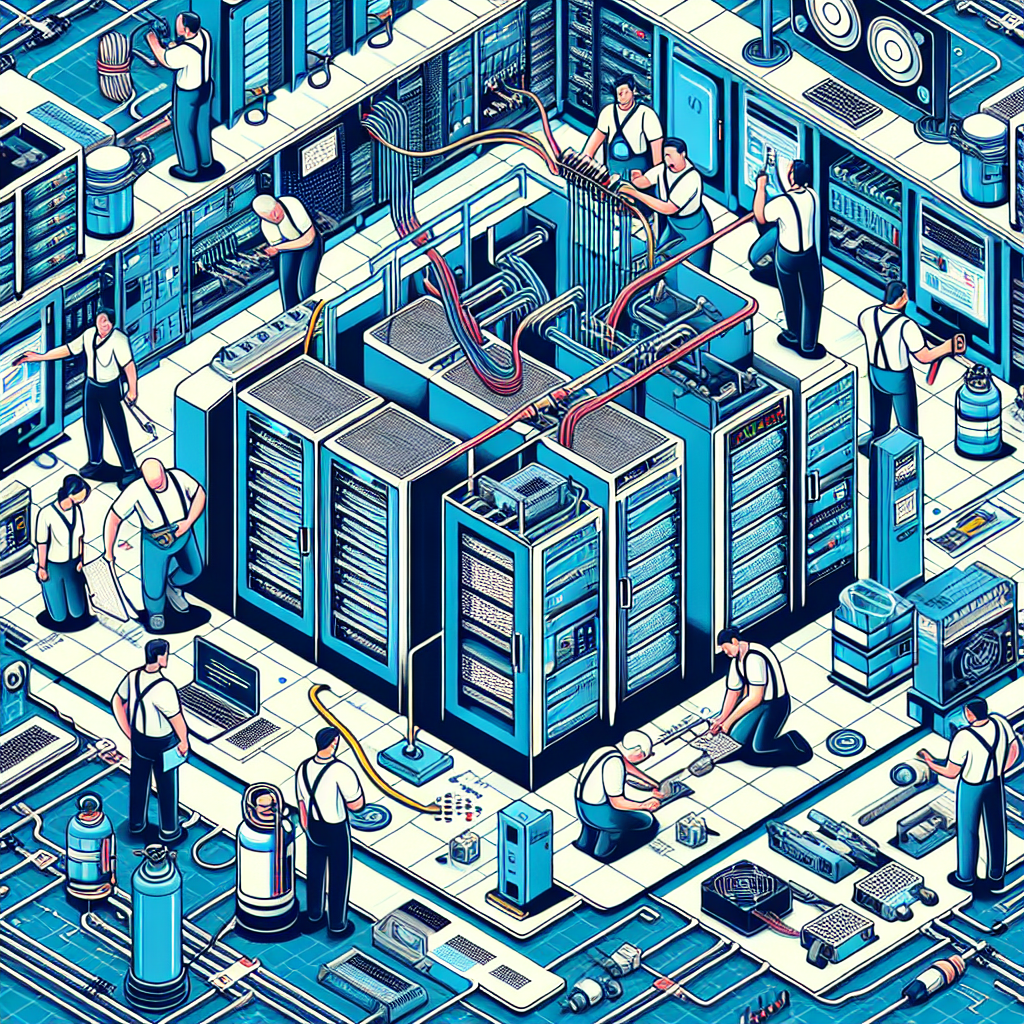
Preparing for Data Center Incidents: Proactive Measures to Minimize Risk
Data centers are the backbone of modern businesses, housing critical infrastructure and sensitive data. However, as data centers become increasingly complex and interconnected, the risk of incidents and disruptions also grows. From power outages to cyberattacks, data center incidents can have serious consequences for businesses, resulting in data loss, downtime, and financial losses.To mitigate these risks and ensure the continuity of operations, it is essential for organizations to take proactive measures to prepare for data center incidents. By implementing robust incident response plans and adopting best practices, businesses can minimize the impact of incidents and maintain the integrity and availability of their data.
One of the first steps in preparing for data center incidents is to conduct a thorough risk assessment. This involves identifying potential threats and vulnerabilities that could affect the data center, such as power outages, equipment failures, natural disasters, and cyberattacks. By understanding the risks that the data center faces, organizations can develop targeted strategies to mitigate these threats and minimize the likelihood of incidents occurring.
Once the risks have been identified, organizations should develop comprehensive incident response plans that outline the steps to be taken in the event of a data center incident. These plans should include protocols for detecting and responding to incidents, as well as procedures for restoring operations and recovering data. By having a clear roadmap for responding to incidents, organizations can minimize downtime and ensure a swift recovery.
In addition to incident response plans, organizations should also implement proactive measures to prevent incidents from occurring in the first place. This can include regular maintenance and testing of equipment, implementing cybersecurity measures to protect against cyberattacks, and ensuring that data center staff are trained in best practices for data center security.
Regularly reviewing and updating incident response plans is also crucial to ensure that they remain effective in the face of evolving threats. By conducting regular drills and exercises, organizations can test the effectiveness of their plans and identify areas for improvement. This proactive approach can help organizations to stay ahead of potential incidents and minimize their impact on operations.
Ultimately, preparing for data center incidents requires a proactive and multi-faceted approach that combines risk assessment, incident response planning, and proactive measures to prevent incidents. By taking these steps, organizations can minimize the risk of data center incidents and ensure the continuity of their operations in the face of potential threats.

Maximizing Data Center Uptime: Proactive Measures to Prevent Downtime
In today’s digital age, data centers play a crucial role in ensuring the smooth operation of businesses. These facilities house a vast amount of critical data and applications that are essential for everyday operations. As such, any downtime in a data center can have a significant impact on a company’s bottom line.To prevent downtime and maximize data center uptime, proactive measures must be taken to address potential issues before they escalate into major problems. Below are some key strategies that data center operators can implement to keep their facilities running smoothly:
Regular Maintenance and Monitoring: Regular maintenance of critical infrastructure components such as cooling systems, power supply units, and networking equipment is essential to prevent unexpected failures. Implementing a comprehensive monitoring system that tracks the performance of these components in real-time can help detect issues before they lead to downtime.
Redundancy and Backup Systems: Implementing redundant systems for critical infrastructure components can help ensure continuous operation in the event of a failure. This includes backup power supplies, cooling systems, and networking equipment. Having a failover system in place can help minimize downtime and ensure data center uptime.
Regular Testing and Disaster Recovery Planning: Regular testing of backup systems and disaster recovery plans is essential to ensure they will function properly in the event of an actual emergency. Data center operators should conduct regular drills to simulate various scenarios, such as power outages or equipment failures, to identify and address any weaknesses in their systems.
Implementing Best Practices for Security: Data center security is a critical aspect of maintaining uptime. Implementing best practices for physical security, access control, and cybersecurity can help prevent unauthorized access and protect against cyber threats that could lead to downtime.
Training and Education: Providing training for data center staff on best practices for maintenance, monitoring, and security can help prevent human error and ensure the smooth operation of the facility. Well-trained staff can quickly respond to issues and minimize downtime.
Regularly updating and Patching Software: Keeping software and firmware up to date is crucial to prevent security vulnerabilities that could lead to downtime. Regularly applying patches and updates can help protect data center systems from exploits and ensure continuous operation.
By implementing these proactive measures, data center operators can minimize the risk of downtime and maximize uptime, ensuring the smooth operation of critical business processes. Investing in preventative maintenance, redundancy, monitoring, and security measures can help protect data center infrastructure and minimize the impact of potential disruptions. Ultimately, taking a proactive approach to data center management is essential for ensuring the reliability and availability of critical business services.
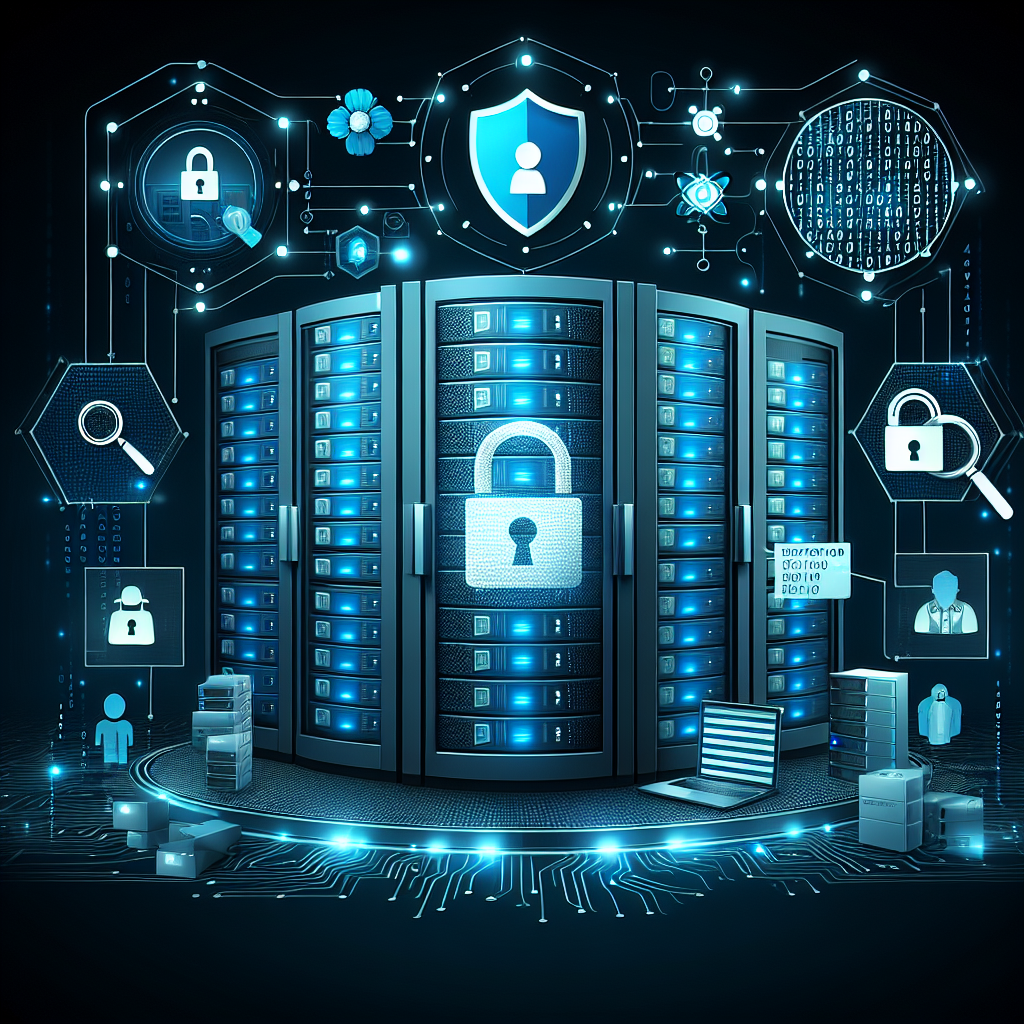
The Importance of Data Center Safety and Security Measures
Data centers play a crucial role in today’s digital world, serving as the backbone of the internet and storing vast amounts of sensitive data. With the increasing reliance on technology and the growing threats of cyber attacks, ensuring the safety and security of data centers has become more important than ever. Implementing effective safety and security measures is essential to protect the valuable information stored within these facilities and prevent potential breaches.One of the key reasons why data center safety and security measures are of utmost importance is to safeguard sensitive data from unauthorized access and cyber attacks. Data centers typically house a wide range of information, including personal and financial data, intellectual property, and confidential business information. A breach in security could result in significant financial losses, reputational damage, and legal implications for the organization.
In addition to protecting data from external threats, data center safety measures also help ensure the physical safety of personnel working within the facility. Data centers are complex environments with numerous electrical systems, cooling equipment, and other machinery that pose potential risks to employees. By implementing safety protocols such as regular equipment maintenance, proper training for staff, and emergency response plans, organizations can minimize the risk of accidents and injuries in the workplace.
Furthermore, data center safety and security measures are essential for maintaining the reliability and availability of critical IT infrastructure. Downtime in a data center can have serious implications for businesses, leading to disruptions in operations, loss of revenue, and damage to customer trust. By implementing robust security measures such as access controls, surveillance systems, and encryption protocols, organizations can reduce the risk of downtime caused by security breaches or physical threats.
Overall, the importance of data center safety and security measures cannot be overstated. Organizations must prioritize the protection of their data centers to safeguard sensitive information, ensure the physical safety of employees, and maintain the reliability of critical IT infrastructure. By investing in advanced security technologies, implementing best practices, and regularly assessing and updating safety protocols, organizations can mitigate risks and protect their data centers from potential threats. In today’s digital age, data center safety and security should be a top priority for any organization that values the security and integrity of its data.

Enhancing Data Center Sustainability through Audits and Compliance Measures
Data centers are a crucial component of the modern digital infrastructure, powering the vast array of online services and applications that we rely on every day. However, the energy consumption and environmental impact of data centers have become a growing concern in recent years. In response to this, many companies are now focusing on enhancing the sustainability of their data centers through audits and compliance measures.One of the key ways in which companies are working to improve the sustainability of their data centers is through conducting energy audits. These audits involve a comprehensive assessment of the energy usage of the data center, including the efficiency of cooling systems, power distribution, and server utilization. By identifying areas where energy is being wasted, companies can implement changes to reduce their energy consumption and lower their carbon footprint.
In addition to energy audits, companies are also focusing on compliance measures to enhance the sustainability of their data centers. This includes adhering to industry standards and regulations, such as the Energy Star program for data centers, which sets guidelines for energy efficiency and environmental performance. By meeting these standards, companies can ensure that their data centers are operating in a sustainable manner and are minimizing their impact on the environment.
Furthermore, companies are also implementing measures such as virtualization and consolidation to improve the efficiency of their data centers. By consolidating servers and utilizing virtualization technology, companies can reduce their energy consumption and improve the overall sustainability of their data center operations.
Overall, enhancing the sustainability of data centers through audits and compliance measures is essential for companies looking to reduce their environmental impact and operate in a more sustainable manner. By conducting energy audits, adhering to industry standards, and implementing efficiency measures, companies can make significant strides towards creating more sustainable data center operations. In doing so, they can not only reduce their carbon footprint but also save on energy costs and contribute to a more sustainable future for all.
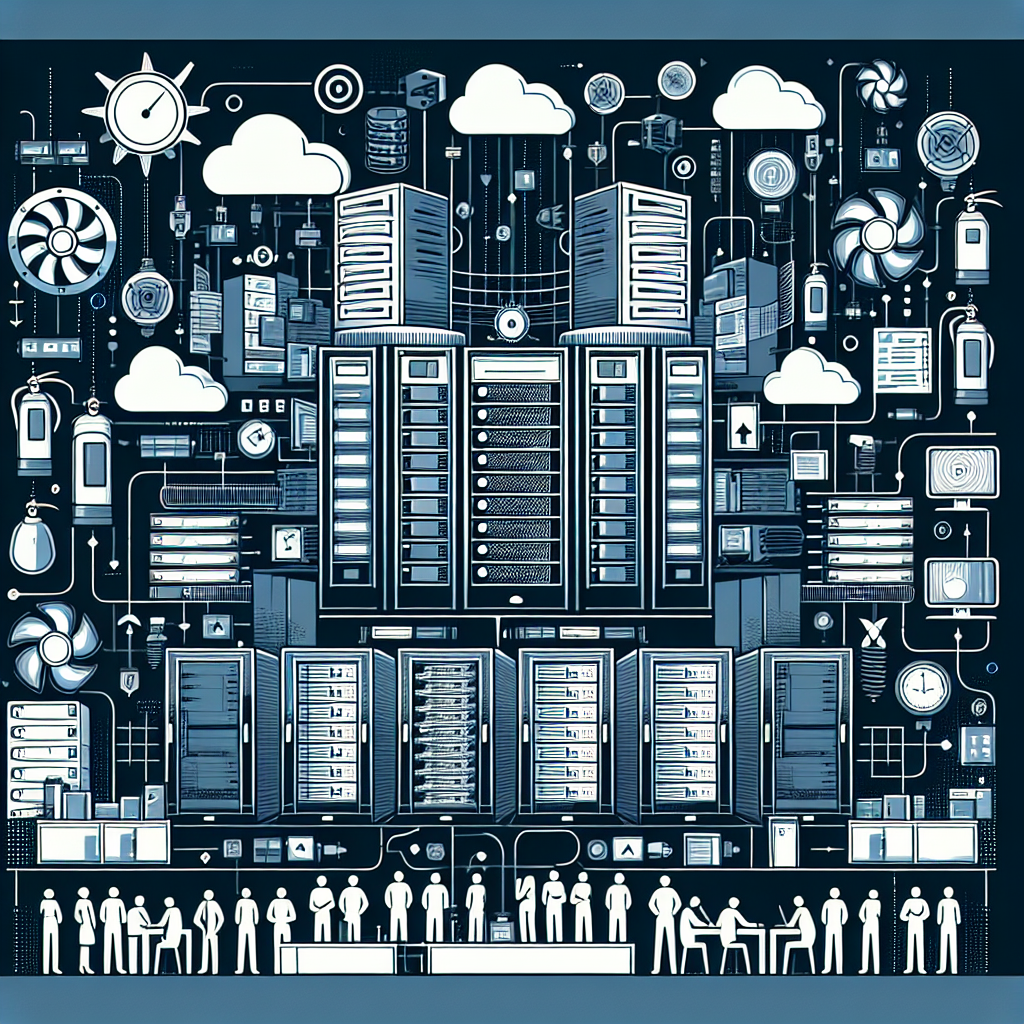
The Role of Safety Measures in Data Center Operations
Data centers play a crucial role in today’s digital world, serving as the backbone of the internet and supporting the storage and processing of vast amounts of data. With the increasing reliance on technology and the growing importance of data in business operations, ensuring the safety and security of data centers has become a top priority for organizations.Safety measures in data center operations are essential to protect the valuable information stored within these facilities and to prevent costly downtime and data loss. From physical security measures to cybersecurity protocols, data center operators must implement a comprehensive set of safety measures to safeguard their operations.
One of the most important safety measures in data center operations is physical security. Data centers house sensitive equipment and data that must be protected from unauthorized access, theft, and physical damage. Access control systems, surveillance cameras, and security guards are commonly used to monitor and control access to data center facilities, ensuring that only authorized personnel can enter and interact with the equipment.
In addition to physical security measures, data centers must also implement robust cybersecurity protocols to protect against cyber threats such as hacking, malware, and data breaches. Firewalls, encryption, and intrusion detection systems are just a few of the cybersecurity measures that data centers employ to safeguard their data and infrastructure from cyber attacks.
Furthermore, data center operators must also prioritize safety measures to protect against environmental hazards such as power outages, fires, and natural disasters. Redundant power supplies, fire suppression systems, and disaster recovery plans are essential components of a comprehensive safety strategy for data center operations.
Overall, the role of safety measures in data center operations cannot be overstated. By implementing physical security, cybersecurity, and environmental safety measures, data center operators can ensure the safety and security of their operations and protect the valuable data that they store and process. In today’s digital age, investing in safety measures is not just a best practice – it is a necessity for the continued success and viability of data center operations.
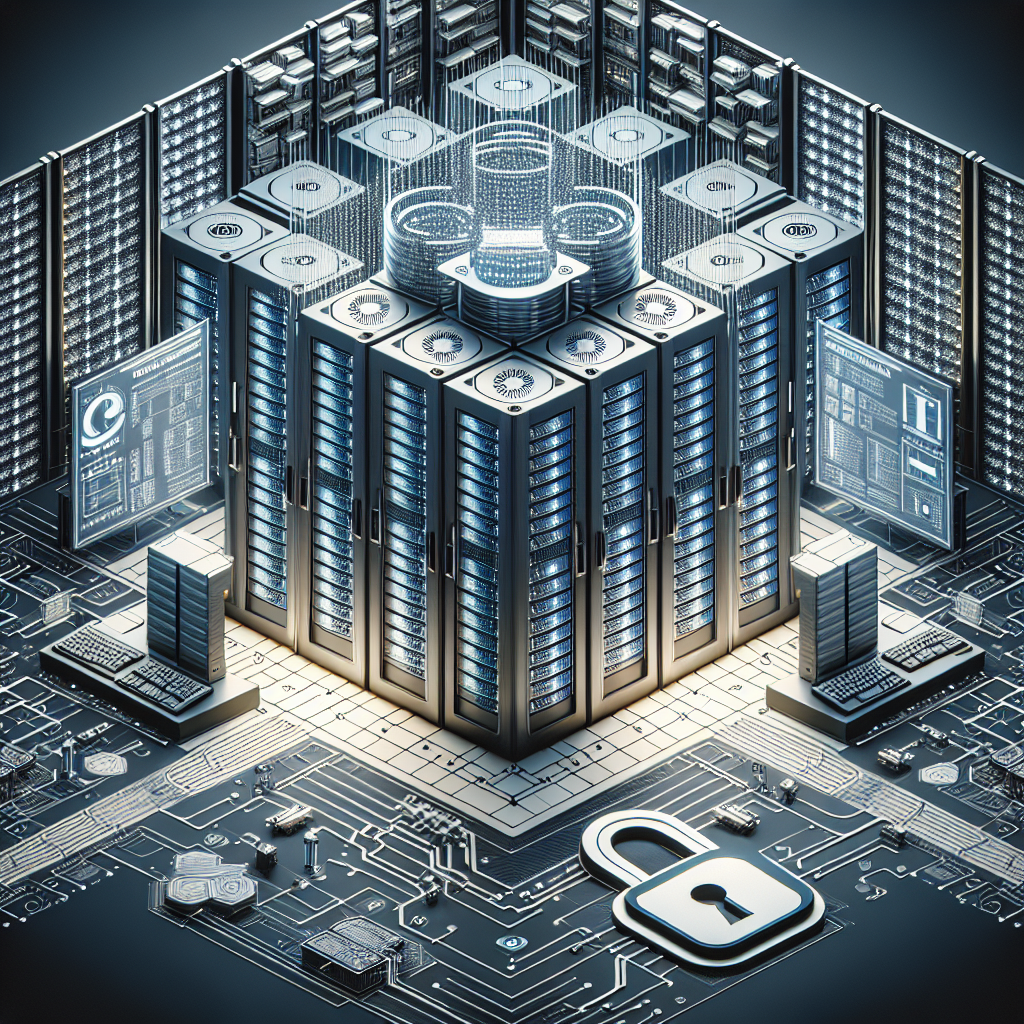
Ensuring Data Center Compliance with Database Security Measures
In today’s digital age, data centers play a crucial role in storing and managing vast amounts of sensitive information. With cyber threats on the rise, ensuring data center compliance with database security measures is more important than ever. By implementing robust security protocols, organizations can safeguard their data and prevent unauthorized access or breaches.One of the key aspects of database security measures is encryption. Encrypting data ensures that even if a cybercriminal gains access to the database, they will not be able to read or make sense of the information. Encryption should be implemented at rest as well as in transit to provide a comprehensive level of protection.
Access control is another critical component of database security. By limiting access to sensitive data to only authorized personnel, organizations can reduce the risk of insider threats and unauthorized access. Role-based access control can be used to assign specific permissions to users based on their job function or level of authority.
Regular monitoring and auditing of database activity are essential for detecting any suspicious behavior or unauthorized access. By monitoring database logs and conducting regular audits, organizations can quickly identify and respond to security incidents. Additionally, implementing intrusion detection systems can help detect and prevent unauthorized access attempts in real-time.
Data masking is another important security measure that can be used to protect sensitive information. By masking or obfuscating certain data elements, organizations can limit the exposure of sensitive information and reduce the risk of data breaches. Data masking techniques include tokenization, redaction, and anonymization.
Finally, organizations should ensure that their data center compliance with industry regulations and standards. Compliance with regulations such as GDPR, HIPAA, and PCI DSS is essential for protecting customer data and avoiding costly fines or penalties. By staying up to date with the latest security regulations and best practices, organizations can maintain a secure and compliant data center environment.
In conclusion, ensuring data center compliance with database security measures is crucial for protecting sensitive information and preventing data breaches. By implementing encryption, access control, monitoring, data masking, and compliance measures, organizations can strengthen their database security and safeguard their data against cyber threats. Investing in robust database security measures is essential for maintaining the trust of customers and stakeholders and protecting the reputation of the organization.
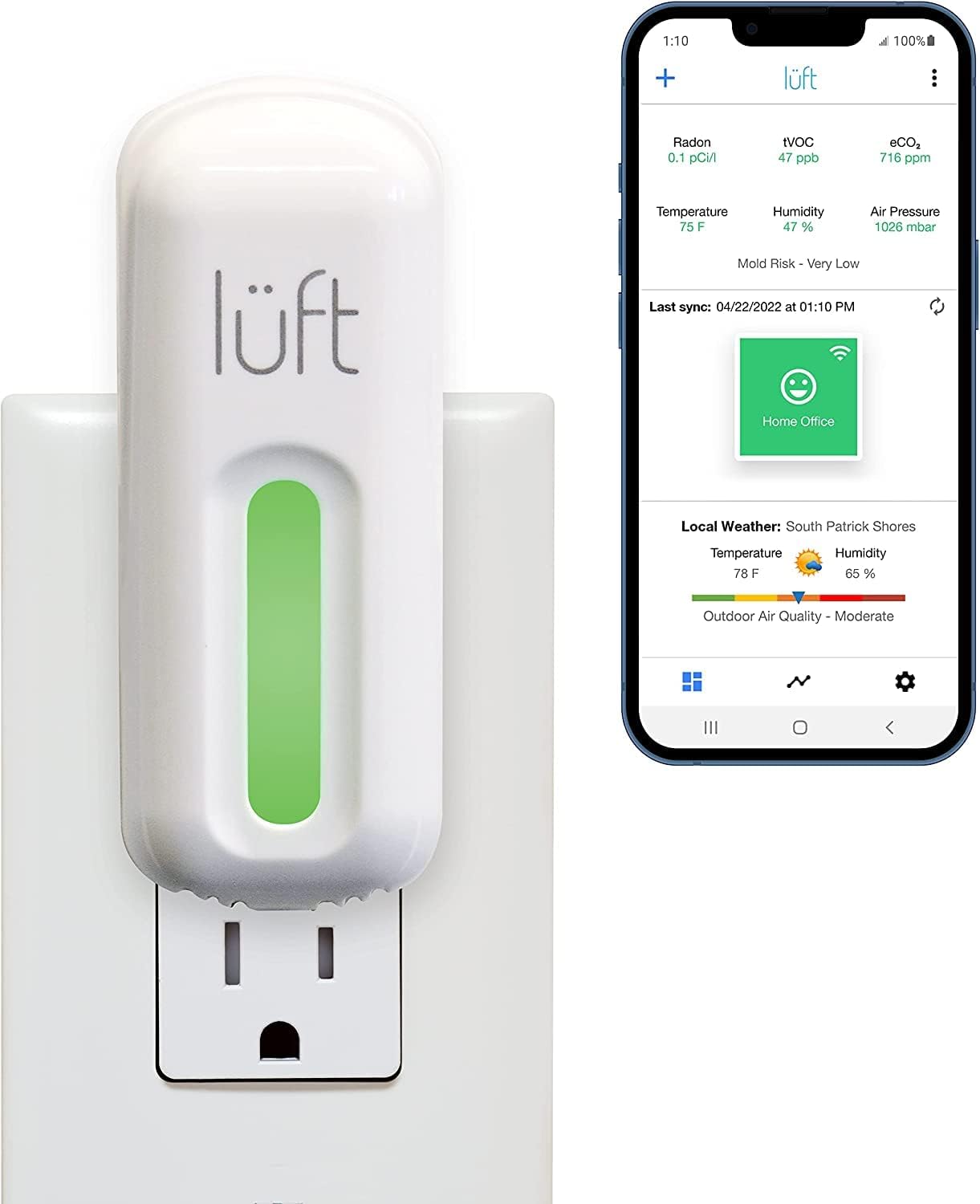
SunRADON lüft: Plug-in, Wi-Fi Radon and Indoor Air Quality Monitor with Mobile App, Continuously Measures Radon, eCO2, VOC’s, Temperature, Pressure, and Humidity
Price: $249.00
(as of Dec 21,2024 17:37:49 UTC – Details)Product Description


lüft – Product Highlights


Modern & Functional
Plug-In, Modern DesignBuilt-in Bluetooth & Wi-FiFront LED Status IndicatorIntegrated NightlightUL Safety Certified


6 Sensors – Compact Design
6 IAQ Sensors incl RadonHourly Data Recording6 min Ad-hoc Refresh No Calibration required4 Years of Data Storage


Easy to Use Mobile Apps
Dashboard ViewTrend ChartsMold Risk IndicatorOutdoor Air Quality IndexOutdoor Weather StationAccess from Anywhere


Advanced Features
Temperature SyncData Sharing Data DownloadCustom NotificationsIAQ Summary ReportsOTA Firmware Updates
Indoor Air Quality Explained
Radon is a naturally occurring, radioactive gas that you cannot see or smell. Radon is normally found at very low levels outdoors but can accumulate in the air in homes and other buildings. Breathing in elevated levels of Radon over long periods can lead to health issues, including lung cancer. In fact, Radon is the leading cause of lung cancer among non-smokers, according to the EPA.Why a long-term Radon monitor? Radon levels fluctuate based on your home’s ventilation, airflow, weather conditions, and seasons. Furthermore, changes or deterioration of the foundation, windows, insulation, and vapor barriers, to name a few, can impact Radon levels. Therefore, long-term, continuous Radon level monitoring will provide peace of mind even after a Radon inspection has been completed or a Radon mitigation system was installedVolatile Organic Compound (VOC) is defined as any compound containing carbon that can be readily vaporized, except methane. VOC’s, measured in totality of its mixed gases or tVOC, are released into indoor environments from cleaning and disinfecting products, paints, wood preservatives, carpeting, building materials, aerosols, insect repellents, microbial growth, and a host of other sources.Why monitor tVOC’s? At elevated levels, VOC’s can cause eye, nose, and throat irritation; headaches, loss of coordination, nausea; damage to liver, kidney, and central nervous system. Some organics (such as Benzene) are suspected or known to cause cancer. Key signs or symptoms associated with exposure to elevated levels of VOC’s include eye infections and irritation, nose and throat discomfort, headache, allergic skin reaction, shortness of breath, signs of poisoning, nausea, vomiting, nose bleeding, fatigue, and dizziness.Carbon dioxide (CO2) equivalents, or short eCO2, are derived from the measurements of the mixed gases, tVOC’s, and describe the quality of indoor air in equivalent units of CO2. Traditionally indoor air quality is limited to the measurement of temperature, humidity, and carbon dioxide alone. eCO2, however, follows increasing CO2 levels but also contains information about additional harmful mixed gases and odorous events, while a CO2 sensor detects just the exhaled CO2 from the room’s occupants.What is a Mold Risk Indicator? The risk of developing mold on surfaces is a function of temperature and humidity. The higher the risk, the faster and more likely it is that mold develops. Our app now analyzes this relationship and alerts you when conditions for future mold risk are favorable on a 5 step scale from very low risk to very high risk.Why lüft from SunRADON? Our home monitor is uniquely designed to continuously measure the quality of the air you breathe by measuring Radon as well as dangerous Chemicals (tVOC’s), Carbon Dioxide equivalents (eCO2), Temperature, Humidity, and Pressure – to ensure the air you and your family breathe is healthy.
Key Specifications
Measurement Uncertainty Radon 10 % (7 days @ 4 pCi/l), Temperature and Humidity 2%, Pressure 0.2% VOC’s measured Alcohols, Aldehydes, Ketones, Organic Acids, Amines, Aromatic Hydrocarbons Data Refresh and Storage 1 hour recorded, 6 min ad-hoc refresh, 4 years on Device, Unlimited on Cloud Connectivity Bluetooth Low Energy, 2.4 GHz Wi-Fi Input Rating 120VAC, 60Hz, 70mW Compliance FCC 47CFR Part15 (B), ICES-003 Ed.6, EU 2015/863 Product Safety Intertek 5016613 (UL 61010-1) Environment INDOOR USE ONLY
MONITORS INDOOR AIR QUALITY LEVELS: The smart choice for monitoring your air, lüft sensors include Radon, Carbon Dioxide equivalent, and VOC’s; and now also includes a 5-level mold risk indicator that alerts you of potential mold growth
DETECTS RADON: Elevated levels of Radon or VOC’s can lead to severe health issues including cancer; it also provides indoor and outdoor temperature and humidity and the local Outdoor Air Quality Index for an all-around air quality assessment
NO BATTERIES NEEDED: Effective yet compact, our Radon monitor plugs directly into any wall outlet and doubles as a nightlight; There are no screws or mounting plates necessary, and no batteries to change
SHORT AND LONG-TERM MONITORING: Review trend charts from the last day to 12 months, receive notifications when levels rise beyond customizable thresholds, or receive indoor air quality reports and download trend data for an even further in-depth look
CONNECTS TO YOUR Wi-Fi: Each device comes with a variety of custom alarm settings, including push and e-mail notifications via the mobile app, and allows you to access live updates with Wi-Fi or Bluetooth connectivity
Introducing the SunRADON lüft: The Ultimate Indoor Air Quality MonitorAre you concerned about the air quality in your home? Meet the SunRADON lüft, a state-of-the-art plug-in device that continuously measures radon, eCO2, VOC’s, temperature, pressure, and humidity. With its built-in Wi-Fi capabilities and mobile app, you can easily monitor and track the indoor air quality in real-time from anywhere.
Radon is a colorless, odorless gas that is the leading cause of lung cancer among non-smokers. With the SunRADON lüft, you can stay informed about radon levels in your home and take necessary precautions to protect your health and well-being.
In addition to radon, the SunRADON lüft also measures eCO2 (equivalent carbon dioxide), VOC’s (volatile organic compounds), temperature, pressure, and humidity. These factors can all have a significant impact on your indoor air quality and overall health.
Don’t wait until it’s too late to take control of your indoor air quality. Invest in the SunRADON lüft today and breathe easier knowing that you are monitoring the air you and your loved ones breathe.
#SunRADON #lüft #Plugin #WiFi #Radon #Indoor #Air #Quality #Monitor #Mobile #App #Continuously #Measures #Radon #eCO2 #VOCs #Temperature #Pressure #Humidity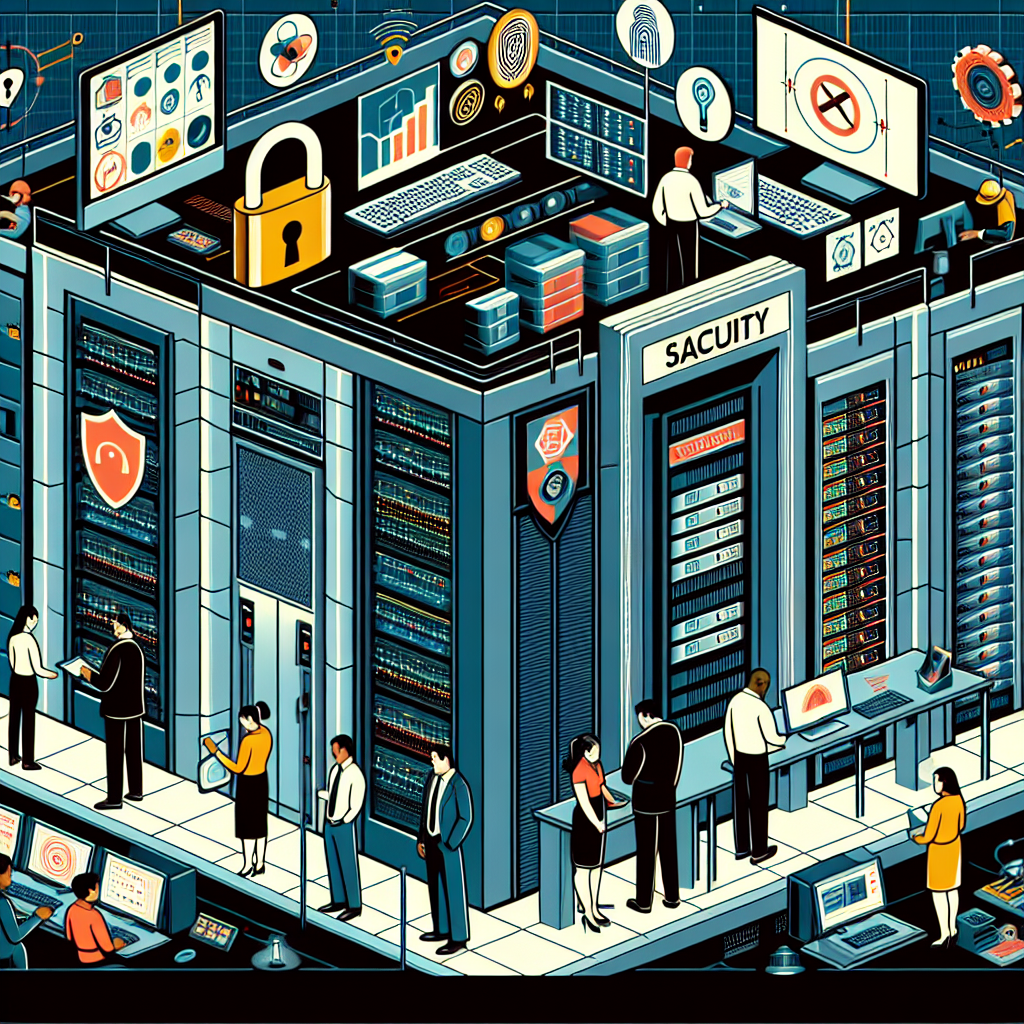
Safety Measures for Data Centers: Essential Steps for Ensuring Facility Security
Data centers play a crucial role in the functioning of businesses and organizations by storing and managing vast amounts of critical data. With the increasing reliance on technology and the internet, data centers have become prime targets for cyber attacks and physical threats. Therefore, implementing robust safety measures is essential to ensure the security and integrity of data center facilities.Here are some essential steps that data center operators should take to ensure facility security:
1. Access Control: Limiting access to the data center is one of the most fundamental security measures that should be implemented. Only authorized personnel should be allowed to enter the facility, and access should be granted based on role-based permissions. Biometric authentication, key cards, and PIN codes are some common methods used for access control.
2. Surveillance Systems: Installing surveillance cameras throughout the data center facility can help in monitoring and recording activities in real-time. Video footage can be used as evidence in case of security breaches or unauthorized access.
3. Fire Detection and Suppression Systems: Data centers house a large number of electrical and electronic equipment that can pose a fire hazard. Installing fire detection and suppression systems, such as smoke detectors, fire alarms, and sprinkler systems, can help in quickly detecting and extinguishing fires to prevent damage to equipment and data.
4. Environmental Monitoring: Data centers require a controlled environment to operate efficiently. Monitoring systems for temperature, humidity, and airflow can help in detecting anomalies and preventing equipment failures due to environmental factors.
5. Redundant Power Supply: Power outages can disrupt data center operations and lead to data loss. Implementing a redundant power supply system, such as uninterruptible power supply (UPS) units and backup generators, can ensure continuous power supply to critical equipment in case of a power failure.
6. Data Encryption: Encrypting data stored in the data center can protect it from unauthorized access and data breaches. Implementing encryption protocols and using secure communication channels can help in safeguarding sensitive information.
7. Regular Security Audits: Conducting regular security audits and assessments can help in identifying vulnerabilities and weaknesses in the data center facility. Implementing remediation measures based on audit findings can help in strengthening security defenses and preventing potential security threats.
In conclusion, ensuring the security of data center facilities is crucial for protecting critical data and maintaining business continuity. By implementing robust safety measures, such as access control, surveillance systems, fire detection and suppression systems, environmental monitoring, redundant power supply, data encryption, and regular security audits, data center operators can mitigate security risks and safeguard their facilities against potential threats.

Proactive Measures: How Data Center Risk Assessment Can Safeguard Your Business
In today’s digital age, data centers play a crucial role in the operations of businesses of all sizes. From storing important information to hosting websites and applications, data centers are the backbone of modern businesses. However, with the increasing reliance on technology comes the risk of potential threats and disruptions.To safeguard your business and ensure the continuity of your operations, it is essential to conduct regular data center risk assessments. By proactively identifying and addressing potential risks, you can prevent costly downtime, data breaches, and other disruptions that can have a significant impact on your business.
One of the key benefits of conducting a data center risk assessment is the ability to identify vulnerabilities in your infrastructure. By assessing the physical security, network security, and other aspects of your data center, you can pinpoint areas that may be susceptible to threats such as cyberattacks, natural disasters, and human error.
In addition to identifying vulnerabilities, a data center risk assessment can also help you prioritize risks based on their potential impact on your business. By assessing the likelihood and severity of each risk, you can allocate resources more effectively and focus on mitigating the most critical threats first.
Furthermore, a data center risk assessment can help you comply with regulatory requirements and industry best practices. By identifying and addressing risks proactively, you can demonstrate to regulators, customers, and other stakeholders that you take data security and business continuity seriously.
When conducting a data center risk assessment, it is important to involve key stakeholders from across your organization, including IT, security, and business continuity teams. By collaborating with experts in different areas, you can gain a comprehensive understanding of the risks facing your data center and develop a robust risk mitigation strategy.
In conclusion, data center risk assessment is a critical component of safeguarding your business in today’s digital landscape. By proactively identifying and addressing potential threats, you can protect your data, ensure the continuity of your operations, and demonstrate your commitment to data security and business continuity. Conducting regular risk assessments will not only help you minimize the impact of potential disruptions but also strengthen your overall cybersecurity posture.

